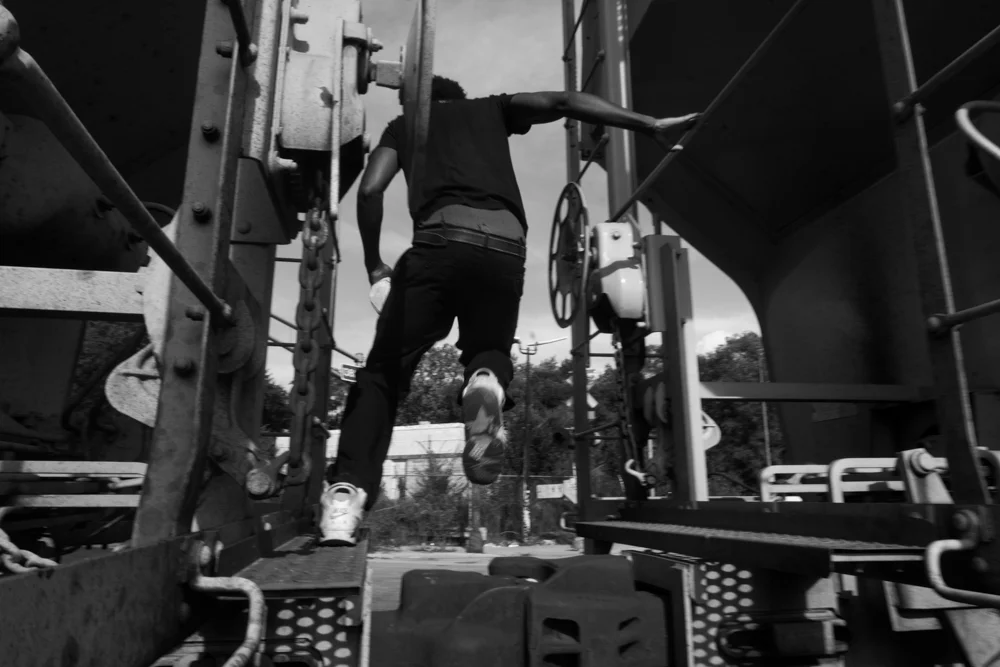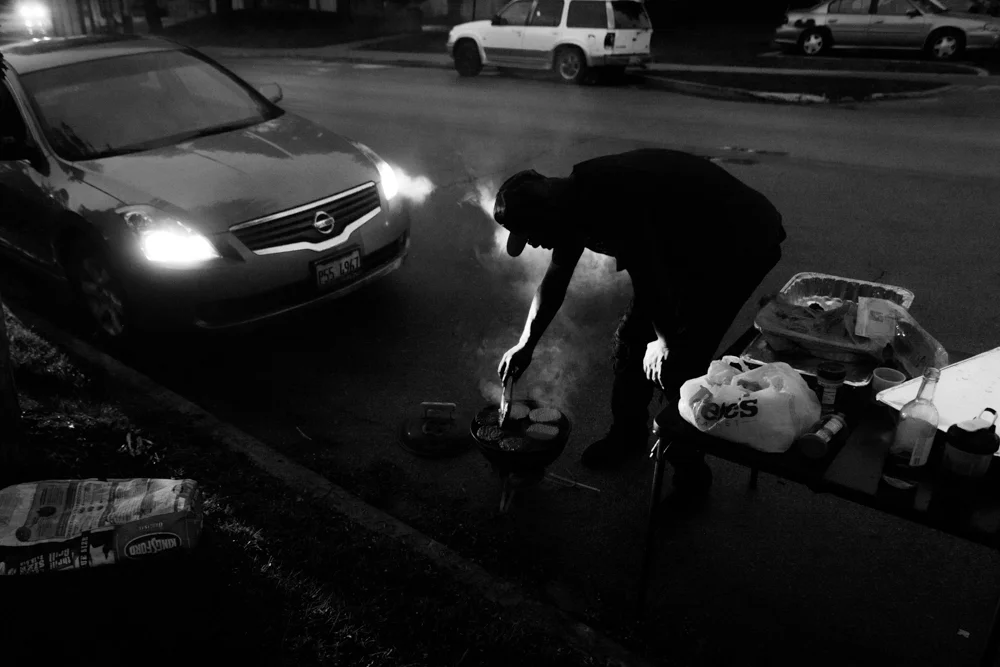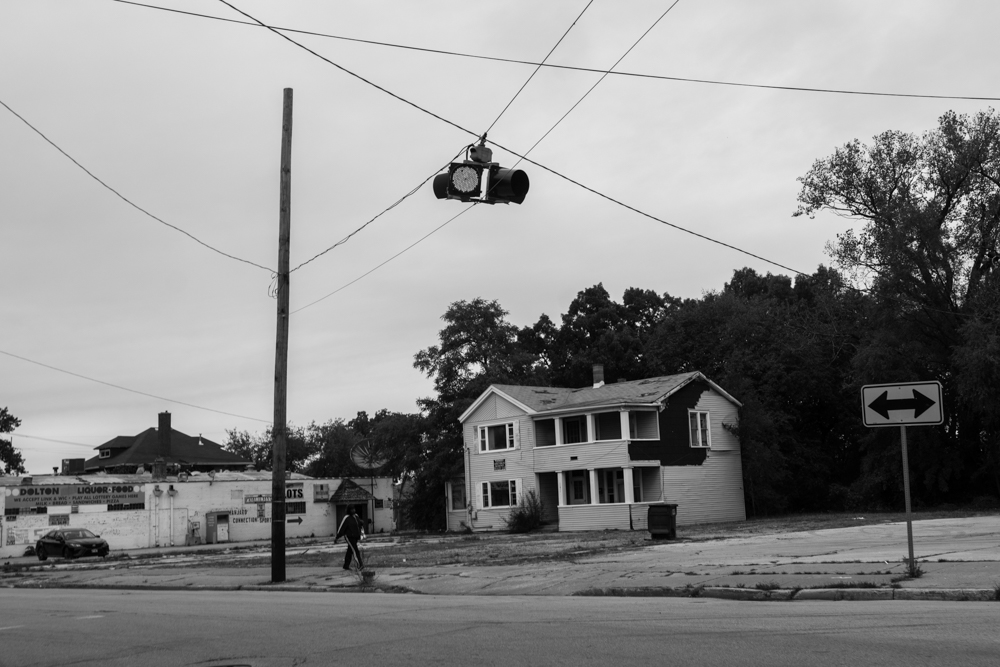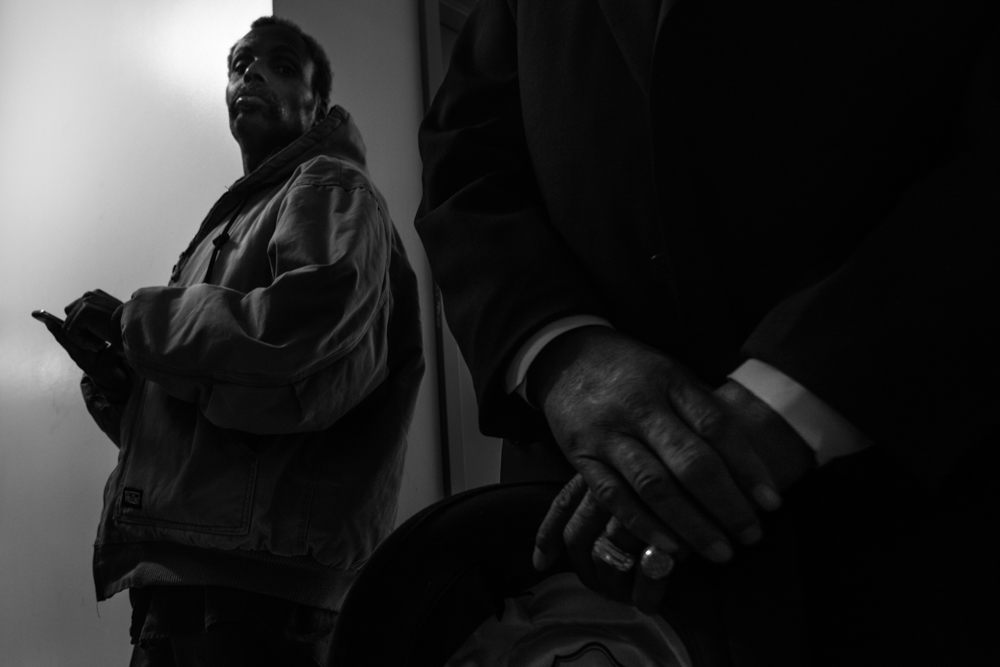Photo Journal Monday: Sebastián Hidalgo
For more than two hours, a stopped freight train blocked an intersection on the border between Riverdale and Dolton in the south suburbs. Trying to get home after school, children began to do their homework as they waited for the train to clear. © Sebastián Hidalgo
Written by Agnes Bae
Sebastián Hidalgo is an award-winning photojournalist who uses photography to engage and explore many social and humanitarian issues affecting communities of color. He is the digital producer for Chicago Public Media-WBEZ and has collaborated with The New York Times, The Washington Post, NBCUniversal, The Chicago Reporter, and more. He currently freelances in Chicago and throughout the Midwest.
Dolton, Illinois—a suburb located just south of the city limits of Chicago, used to be an enclave for the middle-class and an industrial powerhouse. It once boasted decent schooling, local jobs, and affordable homes for its citizens. Today, suburban poverty has eclipsed urban poverty across the country according to the Brookings Institute. At one point, where manufacturing and industrial jobs in the metropolitan area were enough to keep small local businesses afloat, Dolton now faces many challenges threatening the livelihoods of its remaining citizens. Crimes have increased, local schools are struggling, and the village cannot afford to pay a multi-million dollar water debt to the city.
Despite a community event being postponed, a man grills burgers on a Dolton street. "We're still going to be out here!" he said, as more of his friends and family arrived. © Sebastián Hidalgo
Vacant homes are common on the northern edge of Dolton’s once-booming downtown. For the first time in American history, poverty in the suburbs has eclipsed urban poverty. © Sebastián Hidalgo
One of the primary factors for the economic crisis in Dolton was The Great Recession which plummeted housing prices in the 80’s, forcing the local government to raise property taxes to compensate for losses. The rise in taxes drove away many blue-collar families who depended on industrial jobs in factories that inevitably, were also forced to close. It is only one of the many cities across the United States that has faced a similar situation, one in which infrastructure is crumbling, jobs are thinning out, and upward mobility feels like nothing more than an empty vision. It invokes larger questions of our nation’s economy, who it values, and ultimately its efficacy in providing sustainable lifestyles for the people which it serves.
Meanwhile, a big hindrance for residents unique to Dolton are the freight trains that pass through both Dolton and its neighboring town Riverdale. Everyday the trains halt to create a physical barrier for miles in both directions, restricting residents from performing daily responsibilities such as dropping off and picking up children to and from school.
For more than two hours, a stopped freight train blocked an intersection on the border between Riverdale and Dolton in the south suburbs. Trying to get home after school, children began to do their homework as they waited for the train to clear. © Sebastián Hidalgo
Dolton politicians gather at the final community event of the year, “Steppin’ at the Fountain.” © Sebastián Hidalgo
On Sibley Boulevard, Dolton’s main commercial strip, newsstands that once offered job and housing information sit empty, replaced with “For Rent” signs. Deindustrialization throughout the south suburbs decades ago eliminated thousands of private-sector jobs. © Sebastián Hidalgo
Sebastián Hidalgo’s photographs aim to document Dolton as a community, not merely a place on a map. His dramatic black-and-white images depict the town as a place where the socio-economic issues deserve the attention of his audience, but also where the promise of opportunity and success is not lost on its citizens. The stark lighting in the images metaphorically resonate with the town that has been shadowed by economic strife, but one where we are reminded shadows and darkness cannot exist without light. An image of children sprawled out on the pavement completing homework assignments while they wait for the freight train to pass, or the image of the residents attending Miss Jenkins funeral, a beloved figure in the community who was seen by many as a mother figure, capture the intimacy and closeness of Dolton’s residents, proving that they still do, and will continue to withstand the marginalization of their once vibrant community.
An employee at the Village Café in Dolton, a popular local gathering spot, reaches to turn off a fan that had been bothering customers. © Sebastián Hidalgo
Friends and family gather at a memorial service for longtime Dolton resident Evonda Jarmon, known among many residents as “Miss Jenkins.” Jarmon, who was viewed by young children and others in Dolton as a mother figure, died earlier this year. © Sebastián Hidalgo
Outside the Dolton Public Library, a young girl dances on an early evening in October. Freight tracks slice through dozens of Chicago area suburbs, including Dolton. But the inconvenience in Dolton is extreme, with trains often halting and blocking intersections for hours. © Sebastián Hidalgo
















